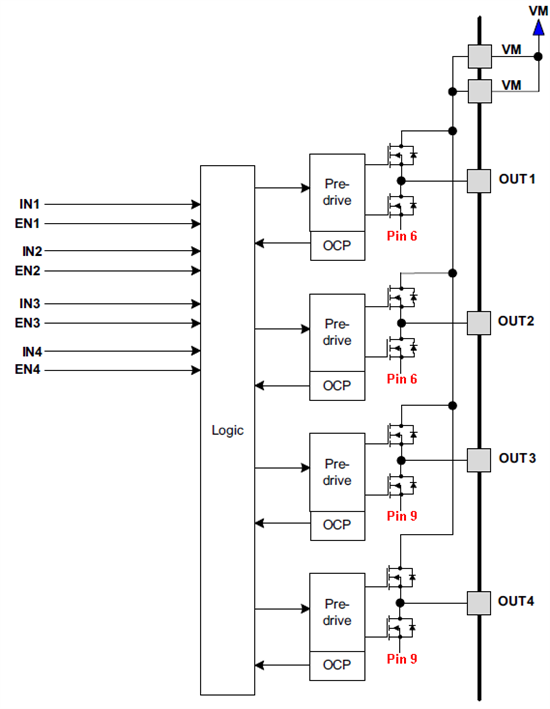Hi,
I'm using a number of DRV8844 chips in my solution and am curious to know if there is any way I can sense motor current. I am using two outputs of the quad H bridge (a full H) to drive a DC motor. I have placed a sense resistor on one of the outputs, but thise seems to be producing strange results. I noticed that there are four connections to ground, presumable 1 per half bridge, can I place my sense resistor between this connection and ground to achieve current sensing?
thanks


